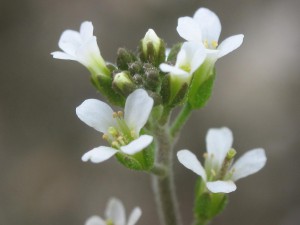Research Interview
By Shizu YAMAGUCHI
June 23, 2015
The associate professor Takeshi OBAYASHI tries to solve his problem “what are human beings? ” using way of genome analysis. He and his colleagues developed an open database system that shows gene coexpression networks. It helps other researchers choice patterns of genes for their research.
INTEREST IN THE PAST
He had studied about plants as a graduate school student. When he did mouse vivisection first, organs’ minuteness made an impression. However, he didn’t want to kill mice everyday at the same time. Some of animal researches, rapid developing vaccine or medicine, confront urgent or serious disease; recently he considers plants research to be helpful in solving social problems, such as food shortage and the gap between rich and poor in the long term.
“Plants are incredibly flexible and they can alter their bodies and properties depending on any new situation. That’s impossible for us human or other animals,” the associate prof. said excitedly.
(Arabidopsis thaliana, material for Obayashi’s doctoral thesis)
A kind of plant’s stem changes into a root by contact with soil for instance. Surprisingly, some trees can form one tree on condition that they’re growing closely and touching each other. Because plants are not able to run around, they’ve gained amazing flexibility to survive.
TODAY’S INTEREST
Today his primary focus of research is on human exists. He’s curious about how we are made. Sequencing of human genome had been completed 12 years ago. Once the technique needed more than 3 billion dollars, but it costs less than 1,000 dollars nowadays. Toshiba started providing some laboratories with genome-sequencing service last year. Obayashi says the important thing is to learn the meaning of genome information, not merely reading.
99.5% of human genes are the same as genes of chimpanzees. Are you surprised to hear that? Our appearance and language are quite different from chimpanzees, but just 0.5% of difference makes our unique properties. Actually genes work not single but in combination. Genes combine strongly or weakly according to individual difference and species. He calls relations between two genes Friends’ Network. The database system that he developed one decade ago tells this network to researchers. (ATTED-Ⅱ for plants, COXPRESdb for animals)
WHAT’S “GENE COEXPRESSION DATABASE”?
Human genome means whole bio-information of an individual, and a person has 20,000 or 30,000 genes. From the huge amount of information, researchers have to find out suitable genes for their study. Affinity index between two genes is available in Gene Coexpression Database.
A researcher uses the database to reveal processes of cancer growing. Obayashi won the FFIT prize and the Young Scientist’s Prize with reputation that the development supports other scientists’ research.
He aims to enhance the accuracy. Comparing two genes, the system can provide us with distinction between a human and a mouse. However, it’s difficult in case of a human and a chimpanzee. Improving the database’s precision is necessary to reveal features of human.
FROM NOW ON
His works are researching and managing laboratory now, and he says he can’t learn all things he’s interested in. His research, developing database system, affects other scientists’ study. Their achievements make him happy, and he feels responsibility at the same time.
He has unlimited curiosity and limited amount of time for research.
Obayashi said, “I hope I take both practical research and seeking mystery of our exists.”
Takeshi OBAYASHI
PH.D. in Science
Postdoctoral Researcher (2004-2009) at Tokyo Institute of Technology, Tokyo University, etc.
Assistant Professor (2009-2012), Associate Professor (2012-) at Graduate School of Information Sciences, Tohoku University
Major Prizes; The Young Scientists’ Prize by MEXT (2015), JSPP Young Investigator Award (2014), Oxford Journals-Japanese Society for Bioinformatics Prize (2013)







